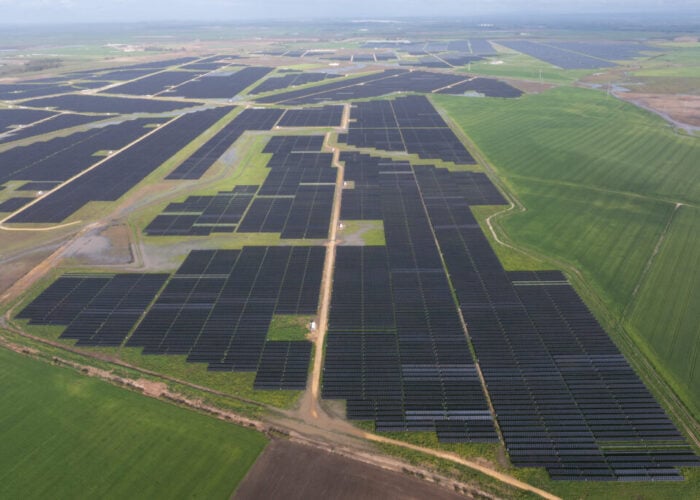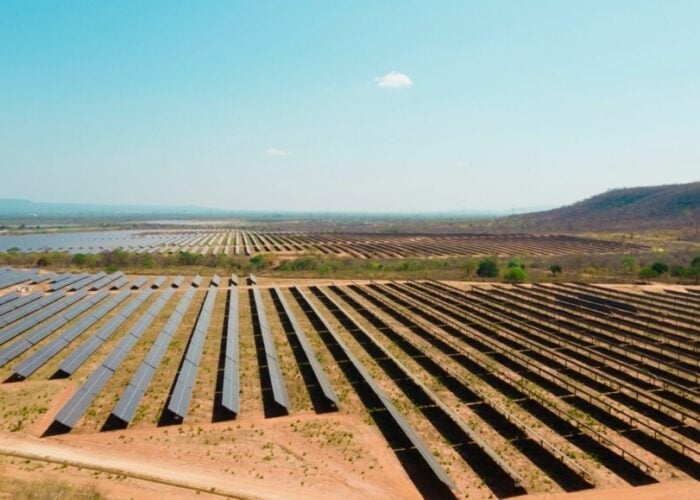To understand the potential impact of the preliminary US Department of Commerce ruling regarding import duties for c-Si modules that contain c-Si cells manufactured within China, it is necessary to clarify what the US market represents to leading tier 1 Chinese c-Si module suppliers (in absolute terms), as well as relative to the overall (global) market.
Furthermore, this should be placed in the context of the ‘country-of-origin’ for the various materials that are already being used within ‘branded’ modules sold through the distribution channels, in particular within the US. Ultimately, these issues provide the real scope and impact that any US-based import tariff may have.
Try Premium for just $1
- Full premium access for the first month at only $1
- Converts to an annual rate after 30 days unless cancelled
- Cancel anytime during the trial period
Premium Benefits
- Expert industry analysis and interviews
- Digital access to PV Tech Power journal
- Exclusive event discounts
Or get the full Premium subscription right away
Or continue reading this article for free
In fact, when reviewing some of the domestic manufacturing restrictions that have been tabled globally for PV panel deployment, a combination of regionally-diverse nuances can be expected in the future. This then requires any c-Si module shipment mix to be configured to satisfy any local import or domestic manufacturing requirements in place at the time.
For countries that have conditions imposed on final module assembly, the obvious solution is to do module assembly in these countries. For any tariff imposed on Chinese-manufactured cells, the solution is to use non-Chinese manufactured cells.
And in this respect, the proposed duties simply add one new ‘obstacle’ to address, the severity of which is ultimately provided by the size of the US PV market relative to the global PV demand. For example, if the US was forecast to comprise >50% of global PV demand, this obstacle would be significant. If the US market is pegged at 10% of global demand, then the impact is clearly less pronounced.
However, flexible value-chain arrangements have characterized c-Si manufacturing in the PV industry (including multi-vendor raw material supply, OEM tolling, contract manufacturing) for many years. Even Tier 1 c-Si manufacturers- with vertical integration from ingot to module – have relied extensively on the use of third-party wafer and cell suppliers. And in the case of cell supply, a significant percentage has already been coming out of Taiwan. Both Chinese and Japanese c-Si module suppliers have been heavy purchasers of Taiwan-based c-Si cells in the past.
Indeed, the entire US market could already have been supplied by c-Si modules using cells that have been exported from Taiwan cell makers in the past few years. Therefore, discussions of having to put a ‘work-around’ in place from scratch are simply not relevant. Taiwan has positioned itself as the powerhouse of c-Si cell manufacturing, with a ‘pure-play’ strategy that has enabled them to refine the cell manufacturing process to be industry-leading today.
In the past, Taiwan-made cells that were exported to China and interconnected into China-branded modules may have been shipped to Germany or Italy, or indeed to the US. From now on, shipping this portion of modules only to the US is likely to be the most pragmatic scenario. Interestingly, a number of Tier 2 China module suppliers had also been heavy users of Taiwan-made c-Si cells: these suppliers may now have a windowofopportunity in the US that they had not considered when OEM cell contracts were put in place.
As illustrated in the attached figure, in order for Chinese module manufacturers to retain a 60% market share within the US market, only 25-30% of cell production from Taiwan is required to be exported to China out to 2016. This level seems entirely manageable and represents little change to the current export shipment mix from Taiwan cell makers.






